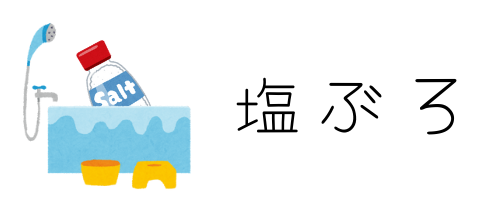ライフハックとしてではなく、英語学習にも極めて有用なのが、著名人が10分程度のプレゼンを行うTEDです。
TED Talksとは、あらゆる分野のエキスパートたちによるプレゼンテーションを無料で視聴できる動画配信サービスのことです。10年ほど前にサービスが開始されてから、政治、心理学、経済、日常生活などの幅広いコンテンツが視聴できることから人気を集めています。
RareJob English Lab
TEDは4000を超える膨大な数の動画があります。しかし慣れないうちは、動画の探し方や視聴のコツが分かりませんよね。この記事では、数多くのTEDを見てきた管理人(塩@saltandshio)が、心を揺さぶられたトークをあらすじと一緒にご紹介します。
ビジネス英会話を効率よく身につけたい方におすすめスクール
シェーン英会話
シェーンは1977年の創業以来、ネイティブ講師が英語を英語で教える「直接教授法」を採用しています。首都圏におけるスクール拠点数は、ネイティブ講師の英会話スクールでNo.1。駅から近いスクールが多いので通いやすく時間を有効に使えます。
スピークバディ パーソナルコーチング
1日1時間の短期集中トレーニングで、あなたの英語力向上をコーチが全力でサポートします。あなたの英語の世界が、劇的に変わります。
サラ・ルイス: 「あと一歩」を大事にしよう
美術史家のサラ・ルイスは、最初に就いた美術館での仕事中、ある芸術家の研究から重要なことに気づきました。それは、「すべての作品が完全な傑作というわけではない」ということです。彼女が私たちに問いかけるのは、私たちの人生における「ほぼ失敗」や「あと一歩」の役割です(約12分)。
[PR]無料体験レッスン実施中!全国208校、創業40年の老舗英会話スクール【シェーン英会話】人々が賞賛するのは『成功』ではなく『創造性』と『熟達』
美術史家のサラ・ルイスは、エリザベス・マーレイ回顧展に携わった際に、1970年代の作品に釘付けになります。
エリザベスマレーはアメリカ人の画家、版画家、製図工。彼女の作品は、ソロモンR.グッゲンハイム美術館、ハーシュホーン美術館と彫刻庭園、近代美術館、ホイットニー美術館、サンフランシスコ近代美術館、美術館など、多くの主要な公共コレクションに収蔵されています。
Wikipedia『Elizabeth Murray (artist)』より
作品は、将来的に使用されるモチーフや要素が散りばめられていましたが、エリザベス・マーレイを知らない人から見たら、とても同じ作家が作ったものと思えない稚拙な作品だったのです。実際にその作品はアトリエのゴミ置き場に置かれており、近所の人が作品の価値を認めて拾って残しておいたものだったのです。
その話を聞いたサラ・ルイスは、成功や創造性についての考え方が大きく変わりました。成功とはいわば、ある瞬間のことです。そして私たちは、そんな瞬間や頂点(成功)を目指します。しかし、本当の成功とは果てしない道(熟達:熟練し上達すること)を追いかけ続ける事ではないかと、サラ・ルイスは気が付いたのです。
それからずっと、サラ・ルイスは成功を熟達に変換するために必要なのはなにかという疑問を、自分に投げかけます。やがて、サラ・ルイスはあることに気が付きます。
それは、私たちが「あと一歩」という贈り物を尊重するところから始まるのではないでしょうか。
I think it comes when we start to value the gift of a near win.
『成功』とは10点(満点)を取ること
サラ・ルイスは、ある5月の寒い日にアーチェリーの代表チームを見学しに行きます。彼らの練習の様子を見ているうちに、サラ・ルイスはずっと自分の中で考え続けていた『成功』と『熟達』の違いについて、大きな気付きを得ます。
そもそもサラ・ルイスは、彼らが75ヤード(70m)も先にある的の中心(10点)を狙っていること自体が、とても理解出来ませんでした。撃つごとに50ポンド(23kg)の負荷がかかる弓を持ち、腕を精一杯伸ばしてもマッチ棒の頭ほどしか見えない標的を、彼らは狙って的を射ていたのですから。
練習時間中には10点に的中した矢もありましたが、なかには的から外れる矢もありました。そうしてみっちり3時間の練習を終えたメンバーは見るからにクタクタで、地面に大の字になって寝転がりながら空をじっと見つめていました。
その光景に、サラ・ルイスは胸を打たれます。
しかし私はじっとしていました。自分は今、めったにお目にかかれない…… 成功と熟達の違いを目撃しているのだと思ったからです。
But I stayed because I realized I was witnessing what’s so rare to glimpse, that difference between success and mastery.
『熟達』とは再現性が無ければ無意味だと知ること
メンバーたちの姿を見て、サラ・ルイスは『成功とは10点を取ること、熟達とはそれが何度でも再現できなければ無意味だと知ること』ということを不意に理解します。
熟達とはゴールするためではなく、追求を続けるために身を削ることです。
Mastery is not a commitment to a goal but to a constant pursuit.
熟達は、自分の追い求める理想とも言い換えられるかもしれません。なぜなら、ほかの人が名作だ、傑作だと決めた作品であっても、作者本人はそれをまったくの未完成で、むしろ問題や欠点だらけの作品であり、言い換えれば「あと一歩」だと考えている例がいくらでもあるからです。
ポール・セザンヌ、オノレ・ド・バルザック、そしてフランツ・カフカ。そのほかにも、現代で称賛を浴びている作家たちのほとんどは、周りの人がどんなに絶賛しても、彼らは自分の不完全な部分に目を向けてさらなる高みを目指した人たちといえるでしょう。
熟達の追求とは、言い換えれば限りなく前進を続ける「もう少し」という名のあくなき挑戦でもあるのです。
[PR]検定試験合格者累計140万人!スマホ対応☆国家資格ほか資格取得ならSMART合格対策講座「あと一歩」を尊重しよう
多くの発明家や起業家、そしてアーティストは、いわば「あと一歩」を体験している人たちです。
熟達は到達にあるのではなく、その手を伸ばすところにあります。今の自分と、なりたい自分との間にある差を縮めようと、求め続けるところにあるのです。
熟達とはキャリアのためではなく、自分の技術のためにすべてを捧げることです。
Mastery is in the reaching, not the arriving. It’s in constantly wanting to close that gap between where you are and where you want to be.
Mastery is about sacrificing for your craft and not for the sake of crafting your career.
彼らは、どれほど素晴らしいものを世に送り出しても、満足することはありません。むしろ、次の作品、次の仕事こそ最高のものにしようと考え、切磋琢磨し続けます。しかも、そこには果てがありません。むしろ彼らは学べば学ぶほど、高みにのぼればのぼるほど、自分の無知を痛感し、己を磨く必要性を強く感じるのです。
それは、先程のアーチェリーチームを率いているコーチたちにも言えることでした。どういうことかというと、サラ・ルイスはコーチのひとりから、「自分もコーチ仲間も、チームのために十分できていると感じたことはない」と、選手たちに聞こえないようにそっと告白されたのです。
頂点を目指す選手たちと同様に、コーチである彼らもまた「あと一歩」を追い求め、ともに高みを目指すために自分のすべてを捧げる覚悟でいたのです。その道は決して平たんな道ではありません。でこぼこでとても歩きにくい道です。辛い道とわかっていても、彼らは前に進むことを決めていたのです。
[PR]しちだの魔法ペンなら35日でバイリンガルに!楽天4部門1位の英会話!<七田式>まとめ:「あと一歩」は果てしない追求への原動力
オリンピックで、銀メダルと銅メダルを取った選手は、後のキャリアに大きな違いが生まれます。なぜなら、銅メダリストがメダルの獲れない4位を免れて比較的満足することが多いのに対し、銀メダリストは不満を感じ、その不満があるからこそ次の大会を目標にするのです。
「あと一歩」はすべての分野に通じる話です。
ナバホの文化では、職人や女性が織物や陶磁器にわざと不完全を入れたものをつくります。これは、「魂の道」と呼ばれる既存の型にわざと入れた欠陥をさします。この「魂の道」は、作り手に逃げ道を与えると同時に、彼らが仕事を続ける理由にもなります。
達人は名人と違い、作品を概念の果てにまで導きます。達人が達人である所以は、果てなどないと知っているところです。そのことについて、トークの最後に高みを目指す一人の人間としてサラ・ルイスはこう語ります。
完成はゴールですが、それでジ・エンドとは思いたくないのです。
Completion is a goal, but we hope it is never the end.
なにかに本気で取り組めば、自分の至らなさに悔しさがこみ上げることもあるでしょう。あまりの非力さに絶望が心を襲うこともあります。しかしそれは、まだあなたには伸びしろがあり、希望があるということの裏返しでもあるのです。
さぁ、「あと一歩」です。
英語全文
I feel so fortunate that my first job was working at the Museum of Modern Art on a retrospective of painter Elizabeth Murray. I learned so much from her. After the curator Robert Storr selected all the paintings from her lifetime body of work, I loved looking at the paintings from the 1970s.
<全文を読む>▼クリック▼
In that moment, my view of success and creativity changed. I realized that success is a moment, but what we’re always celebrating is creativity and mastery. But this is the thing: What gets us to convert success into mastery? This is a question I’ve long asked myself. I think it comes when we start to value the gift of a near win.
I started to understand this when I went on one cold May day to watch a set of varsity archers, all women as fate would have it, at the northern tip of Manhattan at Columbia’s Baker Athletics Complex. I wanted to see what’s called archer’s paradox, the idea that in order to actually hit your target, you have to aim at something slightly skew from it. I stood and watched as the coach drove up these women in this gray van, and they exited with this kind of relaxed focus. One held a half-eaten ice cream cone in one hand and arrows in the left with yellow fletching. And they passed me and smiled, but they sized me up as they made their way to the turf, and spoke to each other not with words but with numbers, degrees, I thought, positions for how they might plan to hit their target. I stood behind one archer as her coach stood in between us to maybe assess who might need support, and watched her, and I didn’t understand how even one was going to hit the ten ring. The ten ring from the standard 75-yard distance, it looks as small as a matchstick tip held out at arm’s length. And this is while holding 50 pounds of draw weight on each shot. She first hit a seven, I remember, and then a nine, and then two tens, and then the next arrow didn’t even hit the target. And I saw that gave her more tenacity, and she went after it again and again. For three hours this went on. At the end of the practice,one of the archers was so taxed that she lied out on the ground just star-fished, her head looking up at the sky, trying to find what T.S. Eliot might call that still point of the turning world.
It’s so rare in American culture, there’s so little that’s vocational about it anymore, to look at what doggedness looks like with this level of exactitude, what it means to align your body posture for three hours in order to hit a target, pursuing a kind of excellence in obscurity. But I stayed because I realized I was witnessing what’s so rare to glimpse, that difference between success and mastery.
So success is hitting that ten ring, but mastery is knowing that it means nothing if you can’t do it again and again. Mastery is not just the same as excellence, though. It’s not the same as success, which I see as an event, a moment in time, and a label that the world confers upon you. Mastery is not a commitment to a goal but to a constant pursuit. What gets us to do this, what get us to forward thrust more is to value the near win. How many times have we designated something a classic, a masterpiece even, while its creator considers it hopelessly unfinished, riddled with difficulties and flaws, in other words, a near win? Elizabeth Murray surprised me with her admission about her earlier paintings. Painter Paul Cezanne so often thought his works were incomplete that he would deliberately leave them aside with the intention of picking them back up again, but at the end of his life, the result was that he had only signed 10 percent of his paintings. His favorite novel was “The [ Unknown ] Masterpiece” by Honore de Balzac, and he felt the protagonist was the painter himself. Franz Kafka saw incompletion when others would find only works to praise, so much so that he wanted all of his diaries, manuscripts, letters and even sketches burned upon his death. His friend refused to honor the request, and because of that, we now have all the works we now do by Kafka: “America,” “The Trial” and “The Castle,” a work so incomplete it even stops mid-sentence.
The pursuit of mastery, in other words, is an ever-onward almost. “Lord, grant that I desire more than I can accomplish,” Michelangelo implored, as if to that Old Testament God on the Sistine Chapel, and he himself was that Adam with his finger outstretched and not quite touching that God’s hand.
Mastery is in the reaching, not the arriving. It’s in constantly wanting to close that gap between where you are and where you want to be. Mastery is about sacrificing for your craft and not for the sake of crafting your career. How many inventors and untold entrepreneurs live out this phenomenon? We see it even in the life of the indomitable Arctic explorer Ben Saunders, who tells me that his triumphs are not merely the result of a grand achievement, but of the propulsion of a lineage of near wins.
We thrive when we stay at our own leading edge. It’s a wisdom understood by Duke Ellington, who said that his favorite song out of his repertoire was always the next one, always the one he had yet to compose. Part of the reason that the near win is inbuilt to mastery is because the greater our proficiency, the more clearly we might see that we don’t know all that we thought we did. It’s called the Dunning-Kruger effect. The Paris Review got it out of James Baldwin when they asked him, “What do you think increases with knowledge?” and he said, “You learn how little you know.”
Success motivates us, but a near win can propel us in an ongoing quest. One of the most vivid examples of this comes when we look at the difference between Olympic silver medalists and bronze medalists after a competition. Thomas Gilovich and his team from Cornell studied this difference and found that the frustration silver medalists feel compared to bronze, who are typically a bit more happy to have just not received fourth place and not medaled at all, gives silver medalists a focus on follow-up competition. We see it even in the gambling industry that once picked up on this phenomenon of the near win and created these scratch-off tickets that had a higher than average rate of near wins and so compelled people to buy more tickets that they were called heart-stoppers, and were set on a gambling industry set of abuses in Britain in the 1970s. The reason the near win has a propulsion is because it changes our view of the landscape and puts our goals, which we tend to put at a distance, into more proximate vicinity to where we stand. If I ask you to envision what a great day looks like next week, you might describe it in more general terms. But if I ask you to describe a great day at TED tomorrow, you might describe it with granular, practical clarity. And this is what a near win does. It gets us to focus on what, right now, we plan to do to address that mountain in our sights. It’s Jackie Joyner-Kersee, who in 1984 missed taking the gold in the heptathlon by one third of a second, and her husband predicted that would give her the tenacity she needed in follow-up competition. In 1988, she won the gold in the heptathlon and set a record of 7,291 points, a score that no athlete has come very close to since.
We thrive not when we’ve done it all, but when we still have more to do. I stand here thinking and wondering about all the different ways that we might even manufacture a near win in this room, how your lives might play this out, because I think on some gut level we do know this. We know that we thrive when we stay at our own leading edge, and it’s why the deliberate incomplete is inbuilt into creation myths. In Navajo culture, some craftsmen and women would deliberately put an imperfection in textiles and ceramics. It’s what’s called a spirit line, a deliberate flaw in the pattern to give the weaver or maker a way out, but also a reason to continue making work. Masters are not experts because they take a subject to its conceptual end. They’re masters because they realize that there isn’t one.
Now it occurred to me, as I thought about this, why the archery coach told me at the end of that practice, out of earshot of his archers, that he and his colleagues never feel they can do enough for their team, never feel there are enough visualization techniques and posture drills to help them overcome those constant near wins. It didn’t sound like a complaint, exactly, but just a way to let me know, a kind of tender admission, to remind me that he knew he was giving himself over to a voracious, unfinished path that always required more.
We build out of the unfinished idea, even if that idea is our former self. This is the dynamic of mastery. Coming close to what you thought you wanted can help you attain more than you ever dreamed you could. It’s what I have to imagine Elizabeth Murray was thinking when I saw her smiling at those early paintings one day in the galleries. Even if we created utopias, I believe we would still have the incomplete. Completion is a goal, but we hope it is never the end.
Thank you.
<閉じる>
\ ほかにも気になるトークが満載! /








